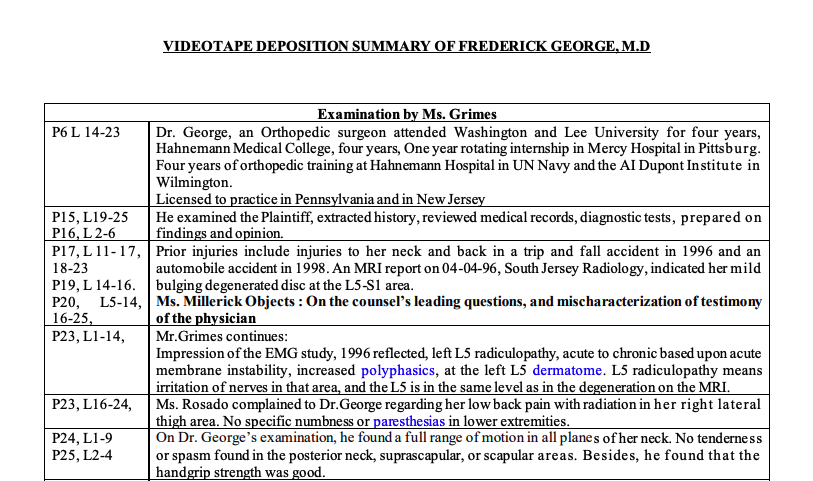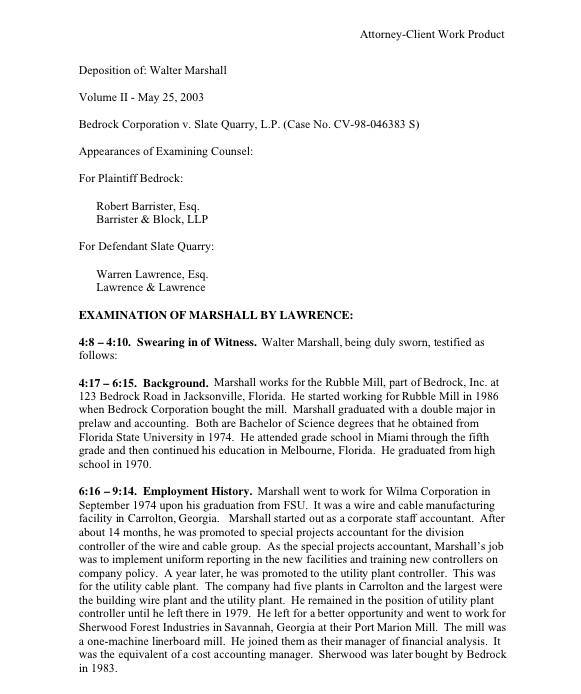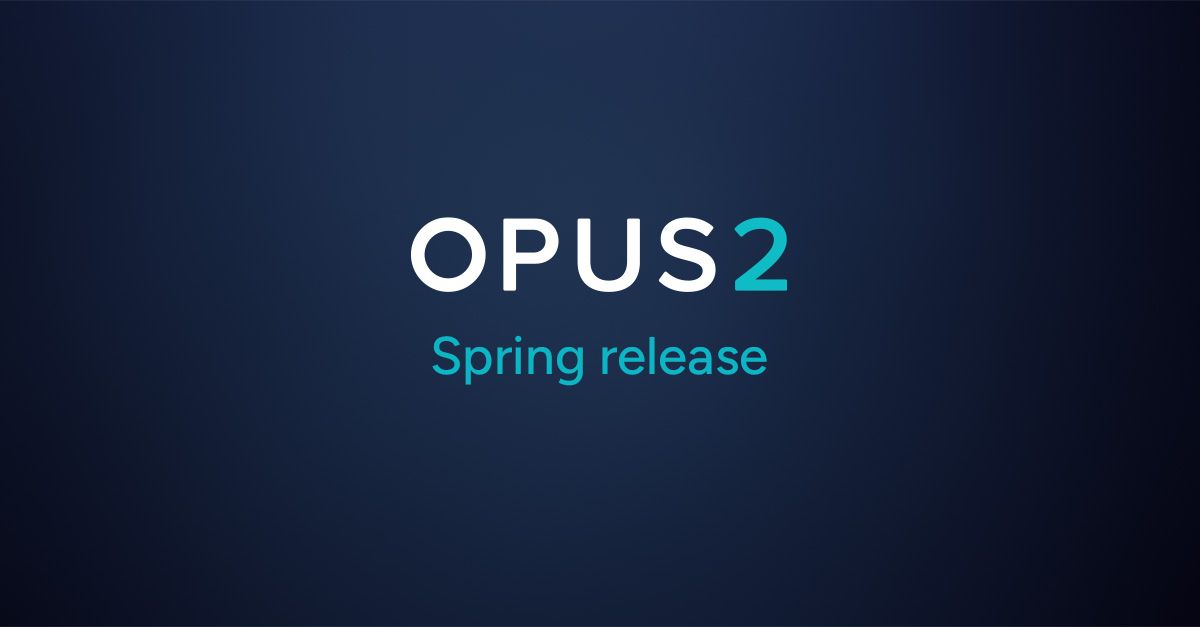In the world of dispute resolution and litigation, clarity, and efficiency are paramount. However, when your team receives a deposition transcript the information is rarely concise, tidy, or organized. With trial deadlines fast approaching, the pressure is on – and a well-crafted deposition summary can make all the difference.
As litigation teams prepare for trial, deposition summaries offer a quick way to understand the key points of a transcript without reading through the entire document. In litigation management, deposition summaries are incredibly valuable but they need to be thorough, concise, clear, and accurate.
In this comprehensive guide, we’ll share everything you need to know about deposition summaries. We’ll answer common questions and discuss how to safely use AI for deposition summaries. In addition, we’ll provide an overview of how to summarize a deposition including exploring a range of deposition formats. Finally, we’ll offer tips, resources, and deposition summary examples for you to explore. Whether you’re a seasoned attorney or a paralegal navigating the nuances of legal case management, you’ll find knowledge, resources, and strategies you can use streamline your deposition summary process.
Frequently asked questions about deposition summaries
What is a deposition summary?
A deposition summary, also called a deposition digest, is a concise overview of witness testimony from a transcript. It highlights relevant issues, relationships, and connections surfaced during a deposition, summarizing lengthy transcripts into an easily digestible format.
Summarizing depositions means condensing pages of witness testimony into an overview that lawyers and legal teams can reference as they prepare their case. A deposition summary also acts as an index that links to the corresponding testimony, helping legal professionals quickly find information and explore context in more detail.
A well-organized deposition summary serves as both a reference guide and a roadmap for attorneys, enabling them to focus on key facts and themes without getting lost in the details. The best deposition summaries help readers understand the essence of the transcript in minutes.
How long should a deposition summary take?
An experienced paralegal or litigation support professional can typically summarize a deposition transcript at a rate of 20 to 25 pages per hour. However, teams that use case management software can often digest depositions faster in addition to getting a head start on deposition designations at the same time.
Can you use AI for deposition summaries?
Yes, generative AI, often shortened to GenAI or just AI, is transforming how legal professionals approach deposition summaries. Adoption of purpose-built AI for lawyers within law firms is growing rapidly, and litigation management offers a valuable use case for AI. In fact, a recent report from legal analyst firm, Ari Kaplan Advisors, showed that 87 percent of litigation leaders believe that AI-enabled case management is a competitive advantage. And the majority of respondents believe that AI will have a significant impact on transcript management and document analysis.
Using AI to summarize a deposition significantly reduces manual labor, with AI only taking a few seconds to complete the task. However, it’s crucial to validate the AI-generated summaries. While AI can rapidly digest and summarize data, human oversight is required to ensure accuracy and apply context. This is particularly important when using standalone AI tools that aren’t specifically designed for litigation and case management.
Consumer generative AI tools, like ChatGPT, should never be used for deposition summaries as it may expose confidential case and client data. Explore your existing technology solutions as many now include AI capabilities. For example, the best legal case management software now seamlessly integrates AI into litigation management processes, further accelerating deposition summarization and supporting greater accuracy. Using AI to summarize depositions helps law firms save time and resources, enabling their litigation team to focus on higher-value, billable work.
How long should a deposition summary be?
Generally, you can expect one page of deposition summary for every five to ten pages of transcript.
While the length of a deposition summary often correlates directly with the length of the original transcript. However, factors that influence final length include the type of witness, complexity of the case, and density of the transcript as well as the preferred format (more on this below) and level of detail needed.
How are deposition summaries used?
Creating deposition summaries is a part of case management, but are often used throughout the litigation lifecycle, from case preparation to courtroom presentation:
Case preparation: Attorneys use deposition summaries to identify key testimony, relevant facts, and potential areas of weakness in their case. Using this information, they’ll add facts and events to their legal case chronology.
Case strategy: Attorneys use deposition summaries to craft legal case strategies as they evaluate witness credibility, identify inconsistencies in testimony, and assess how to incorporate deposition testimony. Clear summaries of depositions help lawyers build a winning case narrative.
Cross-examination: Summaries help attorneys prepare for cross-examining witnesses during trial by highlighting areas of potential contradiction, credibility concerns, or factual discrepancies. This helps them hone their approach when challenging or impeaching witness testimony.
Settlement negotiations: Deposition summaries can be instrumental in settlement negotiations by providing a clear understanding of the strengths and weaknesses of each party’s case.
Courtroom presentation: Attorneys may rely on deposition summaries when identifying testimony to designate for trial. They may also reference deposition summaries during courtroom proceedings to refresh a witness’s memory or to quickly identify contradictory testimony to impeach a live witness.
Who prepares deposition summaries?
Within a law firm, associate attorneys, paralegals, legal assistants, or litigation support specialists typically review and summarize depositions. Alternatively, some law firms will engage a third-party for help summarizing a deposition. Effectively summarizing a deposition requires attention to detail, legal knowledge, and the ability to effectively communicate complex information in a clear and understandable manner.
What does a deposition summary look like?
A deposition summary includes condensed and organized information extracted from the original deposition transcript. Here are the parts a deposition digest or summary may include:
Essential details: At the beginning of the summary, you’ll typically find basic information including the case name, deposition date, witness name, and other relevant case details.
Key points: Summarized statements made by the witness, focusing on relevant facts, events, and testimony.
Page and line references: Where each summarized point appears in the transcript so the reader can find and review the section. When using legal case management software, the deposition summary will automatically include links directly to the summarized sections.
Themes: In addition to the key points, some legal teams also include topic tags to indicate the theme of the content.
How to write a deposition summary
Here’s a step-by-step process to help you create an effective deposition summary. This process remains the same whether you’re summarizing the transcript manually or using AI tools to support your efforts:
- Review the case
Whether drafting the deposition summary manually, or using AI assistance, make sure you have a basic understanding of the case before you begin. This is particularly important for paralegals and litigation support staff that work on multiple matters simultaneously. Taking a few minutes to do this before you begin gives you important context that will help you more quickly identify important facts, characters, and issues in the transcript. - Skim the entire deposition and outline your summary (Optional if using AI)
Familiarize yourself with the deposition by quickly reading through it. As you do, begin highlighting key sections and making rough notes in your deposition summary template to serve as an outline. If you’re creating a chronological or topical summary, be sure to include notes about dates and issues as well as the pages where they’re mentioned. - Draft the summary
If drafting manually: Go back to the beginning of the transcript and begin writing the summary according to your outline. For each entry, write a clear and concise overview following your chosen format. Summarize each section or topic systematically to ensure that the summary accurately reflects the original testimony.
Summarizing depositions with AI: Ideally, you can use AI integrated into your case management solution to help generate deposition summary drafts. Because your deposition transcripts are already in your case management system, you can easily begin summarizing without moving data into another tool, which is less efficient and may introduce errors. Open the transcript and simply ask AI to write a deposition summary.
For example, in Opus 2, users can create summary drafts in seconds, selecting any deposition summary format or toggling between different options.
- Review the summary and check for consistency
Review the draft summary carefully, comparing it to the original transcript for accuracy, coherence, and completeness. Edit with an eye for brevity and readability. Is there a way to convey the essential facts more succinctly? In addition, check to ensure that the summary aligns with your understanding of the case, particularly when using AI to assist with your draft. While AI can summarize data quickly and is increasingly effective, it doesn’t have the benefit of understanding the case context or years of legal experience.
In addition, review the draft to ensure it only includes information conveyed in the transcript. Keep in mind that the summarized deposition may be used throughout the case for a variety of purposes, and may be shared with external stakeholders. This is why it’s crucial to present the information from an objective standpoint and avoid including any subjective interpretations or commentary. As you work, you can include these observations and notes for your team in separate annotations. - Finalize and distribute
When your summary is complete, finalize it, save it to a shared case folder or case management platform, and send to litigation team members who need immediate access. - Next steps: Update your case chronology, character profiles, and connections
Add any new information uncovered in the deposition to your case chronology and character profiles. Link these entries to the deposition.
Deposition summary format options
When exploring how to write a deposition summary, you’ll discover there are a few ways to organize the information. Which summary format you use will depend on the preferences of your litigation team and which style will be most useful for their purposes.
Page-line deposition summary: In a page-line deposition summary, important information is referenced to by the specific page and line numbers where it appears in the original transcript. It is detailed and the summary order follows the order of the original transcript. The page-line deposition summary example from MedQuest offers the findings in a table, which can help readers quickly navigate the document.

Page deposition summary: Similar to the page-line summary, a page summary follows the order of the transcript. However, instead of specific line references, it summarizes content by page ranges. This format provides a broader overview of the deposition and tends to be shorter. This page deposition summary example from Scribd provides the topic of each section while also following transcript.

Topical deposition summary: This format organizes notable deposition information using predefined topics or categories. By grouping related information together, the topical deposition summary makes it easier to see all the relevant information about the issues in the case. Technology like Opus 2 Cases makes creating topical deposition summaries across multiple witnesses easy.
Q&A deposition summary: The Q&A deposition summary format provides context for responses by providing the question in addition to the summarized response or the verbatim response. Here’s a sample Q&A deposition summary from Trivent Legal:

Chronological deposition summary: Rather than summarizing the transcript according to the order of the deposition, a chronological deposition summary follows the order of case events. If you are creating a master chronology in a case management platform, you can link relevant portions of testimony directly to it.
Narrative summary: Unlike the other deposition summary formats which often use a chart to separate and organize information, this approach presents the relevant information in paragraph form. The goal is to create a cohesive story-like format, weaving together key points and events.
Quick tips for efficient and effective deposition summaries
Templatize to save time
When it comes to deposition summaries, time is always a factor. Whether you need to turn around one summary or a dozen, getting it done quickly (and accurately) is crucial. Start working proactively before the initial transcript comes in by creating and beginning to fill in a deposition summary template.
Before the initial deposition transcript comes in, start reviewing the case and deposition preparation notes. Create lists of key topics, characters, and events that your team plans to cover in the deposition so you can quickly identify and tag each one.
Adopt an attorney’s perspective
A good deposition summary strikes the perfect balance between brevity and detail. Admittedly, it can be difficult to condense information while ensuring important information and nuance remain.
To navigate this challenge, it can be helpful to take on an attorney’s perspective. What information will they need to move their case forward? What parts of the testimony will be important for trial? It’s okay to include more details if it is helpful to the lawyers on your team. Use your best judgement based on your understanding of the case.
Take advantage of technology
The best way to write disposition summaries efficiently and effectively while moving the case forward is to leverage technology. AI-enabled case management software that centralizes your work can save a ton of time.
As outlined above, AI can reduce the time required to write a deposition summary from hours to minutes. But even without AI, case management solutions make writing summaries faster by offering helpful tools for finding keywords, tagging topics, highlighting, annotating and more. You can then use those tags to create the initial outline or summary chart for a page-line summary or topical deposition summary. Additionally, each will be linked automatically and making additions or changes to your chronology and characters is quick and easy.
To explore transcript management software and how case management software streamlines other litigation processes, check out these helpful webinars:
- Advanced transcript management: Transcript management workflows for practitioners on a deadline
- Making litigation easier with Opus 2 Case Management version 8
Deposition summary examples
Page-line deposition summary example
This page-line deposition summary example offers a concise overview of a sample deposition transcript. You’ll notice how easy the page-line deposition summary is to follow along with, even for someone unfamiliar with the case. This format also ensures that lawyers can quickly find the relevant information within the deposition transcript to explore more context and detail.
Verbatim Q&A deposition summary example
This sample Q&A deposition summary is a good example of an alternative format. You’ll notice the summary uses a table to organize the key information including the page and line references, the questions and answers asked, as well as the topics covered in each section. This format is a good option for simple or short depositions, but may not be useful for summarizing longer, complex testimony.
Conclusion
Deposition summaries are crucial tools for legal professionals, especially in complex litigation. They surface essential facts that may be buried in lengthy deposition transcripts, making the information more accessible and actionable for legal teams. With the right tools, experience, and approach, you can efficiently create effective deposition summaries that move your case forward.
Deposition summaries are essential tools for legal teams, helping them manage large volumes of testimony and distill important facts for case preparation and strategy. With AI advancements and case management software, the deposition summary process is becoming faster, more accurate, and easier to manage.
If you’re looking to accelerate your deposition summarization process, consider leveraging AI-assisted case management software to empower your team and deliver even more client value.
To learn more or see AI for deposition summaries in action, request an Opus 2 Cases demo.









